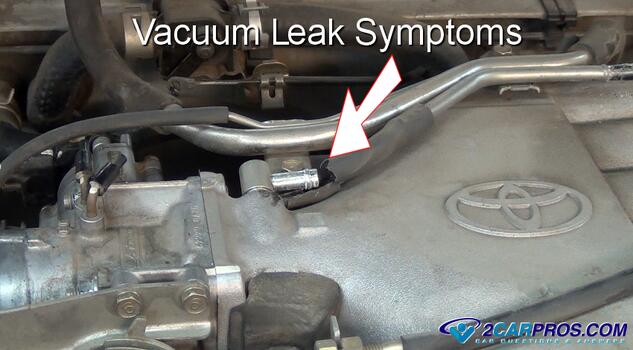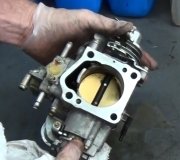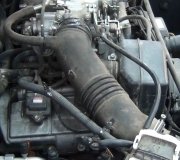Introduction to Engine Vacuum
We have created an in-depth, technical step-by-step guide to understanding the symptoms of an automotive engine vacuum leak. A vacuum leak occurs when air enters the engine through a crack or gap in the vacuum hoses, intake manifold gasket, air intake tube or other components. This unmeasured air disrupts the engine's air-fuel balance, leading to a range of performance problems.
Engine vacuum is a large factor in the equation of the fuel management system which is determined by the engine computer. Most internal combustion engine's hold between 15 and 18 inches of vacuum when idling, this amount varies when the engine is under load. The amount of vacuum is measured by two sensors, mass air flow (MAF), or a manifold absolute pressure (MAP) sensor.
Vacuum Leak Symptoms
With improper vacuum the engine is forced to run in an unstable environment which can cause:
1. Check Engine Light: This warning light is designed to inform the driver there is a problem with the engine management system which can be identified as a lean trouble code such as P0171 or P0174. The ECU constantly monitors the air-fuel ratio through the oxygen sensors, and when it detects a persistent lean condition, it can trigger the CEL.
2. Rough Engine Idle: One of the most common symptoms of a vacuum leak is a rough or uneven idle. The engine may struggle to maintain a consistent RPM at idle, often fluctuating erratically. When vacuum is unmetered via the throttle bore the fuel air mixture cannot be controlled by the engine computer which can cause the fuel trim to fluctuate.
3. Fuel Economy: While a lean mixture might suggest lower fuel consumption, the opposite can occur. Because the engine computer detects excessive air inside the exhaust system via the oxygen sensor it will try and compensate by injecting more fuel into the engine to try and alleviate the problem.
4. Stalling at Idle or Slow Speeds: In more severe cases, a vacuum leak can cause the engine to stall, especially at idle or during low-speed operations. An engine will stall at idle due to the inability to hold vacuum which is a base requirement for basic engine idle speed.
5. Hissing or Whistling Noise: Because air is being pulled into the engine intake manifold it can create a sucking, hissing or whistling noise which will go away the second the throttle bore is cracked open or the engine is under load. This can confirm the issue of the vacuum leak and not be mistaken for a front accessory bearing or serpentine belt noise.
6. High Engine Idle: The engine can idle higher because the computer has closed down the throttle bore or IAC motor completely trying to lower the engine speed, but it cannot do to the air which is entering the engine elsewhere increasing the idle speed. This issue can be accompanied by a check engine light warning light (CEL).
7. Poor Engine Acceleration: This mostly happens on cars equipped with a MAF sensor, which is because the engine computer monitors the air entering the engine and if the leak is after the sensor it will assume there is less air entering the engine. Less air means less fuel and will cause the engine to have less power than usual.
8. Cylinder Misfires: The engine combustion process is dependant on the correct fuel/air mixture. When this mixture becomes "to lean" due to a vacuum leak it can cause a misfire on one or more cylinders depending on the location and severity of the leak. This problem may temporarily go away under heavy acceleration due to the low vacuum condition engine load creates.
9. EVAP System Problems: The evaporative emission system which scavenges raw fuel vapor and then recycles it into the fuel tank in the form of liquid fuel depends on the vacuum of the engine to operate through the EVAP system purge valve. This valve is attached to the engines intake manifold and can produce a P0440 EVAP System Malfunction trouble code.
10. HVAC Blend Door Actuator Malfunction: The HVAC system, (some cars) is operated by engine vacuum and when the vacuum supply is missing due to a leak either under the hood or the dashboard these actuators will fail to change positions resulting in the duct air flow to stay in the default position which is defrost.
Conclusion
Symptoms of an engine vacuum leak found early can prevent further damage and maintain your vehicle’s performance. If you suspect a vacuum leak, it's essential to address the issue promptly by inspecting hoses, gaskets, and other potential sources of leaks.
Credits
This guide knowledge base was created by the 2CarPros Team, and by Ken Lavacot: Automobile repair shop owner and certified master automobile technician of over 30 years. If you have question or need help please ask one of our experts we are happy to help. Please visit our 2CarPros YouTube Channel for additional car repairs.




